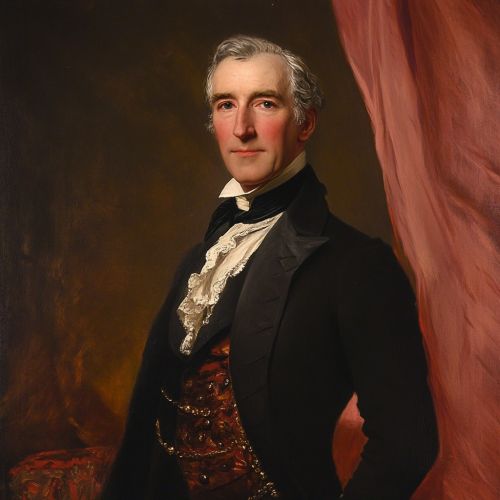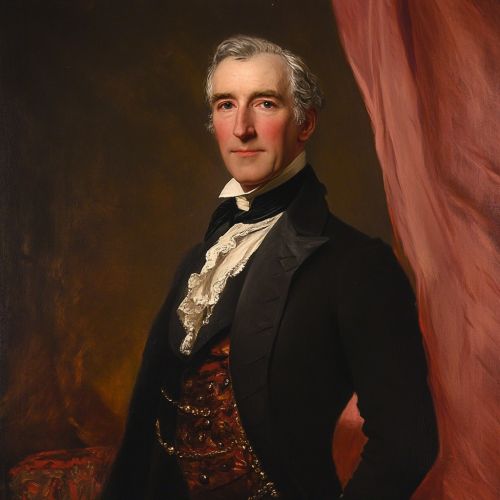John William Strutt, 3rd Baron Rayleigh
Early Life and Education
John William Strutt, 3rd Baron Rayleigh, was born on November 12, 1842, in Langford Grove, Maldon, Essex, England. He was the eldest son of John James Strutt, 2nd Baron Rayleigh, and Clara Elizabeth La Touche. Rayleigh's early education was conducted at home under the guidance of private tutors, which was a common practice for children of the British aristocracy during that period. He later attended Eton College, one of the most prestigious schools in England, before enrolling at Trinity College, Cambridge, in 1861.
At Cambridge, Rayleigh studied mathematics and natural sciences, excelling in both fields. He graduated with a Bachelor of Arts degree in 1865, achieving the rank of Senior Wrangler, the highest honor in the Mathematical Tripos. He continued his studies at Cambridge, earning a Master of Arts degree in 1868. During his time at Cambridge, Rayleigh developed a keen interest in experimental physics, which would shape his future career.
Academic Career
Rayleigh's academic career began in earnest when he was elected a Fellow of Trinity College in 1866. He conducted research in various areas of physics, including optics, acoustics, and electromagnetism. In 1879, he succeeded James Clerk Maxwell as the Cavendish Professor of Physics at the University of Cambridge, a position he held until 1884. During his tenure, Rayleigh made significant contributions to the understanding of wave theory and the propagation of sound and light.
One of Rayleigh's most notable achievements was his work on the scattering of light, which led to the explanation of why the sky is blue. This phenomenon, known as Rayleigh scattering, occurs because shorter wavelengths of light (blue and violet) are scattered more effectively by the molecules in the atmosphere than longer wavelengths (red and yellow). Rayleigh's work in this area laid the foundation for future research in atmospheric physics and optics.
Scientific Contributions
Rayleigh Scattering
Rayleigh's investigation into the scattering of light by small particles was a major breakthrough in the field of optics. His theoretical work, published in 1871, provided a mathematical framework for understanding how light interacts with particles much smaller than its wavelength. This work not only explained the blue color of the sky but also had implications for various other phenomena, such as the reddening of the sun at sunrise and sunset.
Acoustic Theory
In addition to his work on light, Rayleigh made significant contributions to the field of acoustics. His two-volume treatise, "The Theory of Sound," published in 1877 and 1878, is considered a seminal work in the field. In this treatise, Rayleigh systematically analyzed the behavior of sound waves, including their propagation, reflection, and diffraction. He also explored the resonance of musical instruments and the human ear's response to sound, providing a comprehensive theoretical framework that remains influential to this day.
Electromagnetic Theory
Rayleigh's contributions to electromagnetism were also noteworthy. He conducted experiments to measure the electrical conductivity of various materials and investigated the behavior of electromagnetic waves. His work in this area complemented the theoretical developments of contemporaries such as James Clerk Maxwell and Heinrich Hertz, helping to advance the understanding of electromagnetic phenomena.
Fluid Dynamics
Rayleigh made important contributions to the study of fluid dynamics, particularly in the context of stability and turbulence. His work on the stability of fluid flows, published in the late 19th century, provided insights into the conditions under which fluid motion remains stable or becomes turbulent. This research had practical applications in engineering and meteorology, influencing the design of aircraft and the study of atmospheric circulation.


Nobel Prize and Later Life
In 1904, Rayleigh was awarded the Nobel Prize in Physics for his investigations of the densities of the most important gases and for his discovery of argon, an inert gas in the Earth's atmosphere. This discovery, made in collaboration with chemist William Ramsay, was significant because it challenged the existing understanding of the composition of the atmosphere and led to the identification of a new group of elements, the noble gases.
Rayleigh continued his scientific work well into his later years, publishing numerous papers on a wide range of topics. He was also actively involved in various scientific organizations, serving as President of the Royal Society from 1905 to 1908. Throughout his career, Rayleigh was known for his meticulous experimental techniques and his ability to combine theoretical and experimental approaches to solve complex problems.
Personal Life
Rayleigh married Evelyn Georgiana Mary Balfour in 1871, and the couple had three sons and one daughter. His eldest son, Robert John Strutt, succeeded him as the 4th Baron Rayleigh and also became a distinguished physicist. Rayleigh's personal life was marked by his dedication to both his family and his scientific pursuits. He was known for his modesty and humility, often downplaying his achievements and giving credit to his collaborators and predecessors.
Legacy
John William Strutt, 3rd Baron Rayleigh, left an indelible mark on the field of physics through his pioneering research and discoveries. His work on light scattering, acoustics, and fluid dynamics continues to influence modern science and engineering. The Rayleigh number, a dimensionless number used in fluid dynamics to describe the flow of fluids in response to temperature gradients, is named in his honor. Additionally, the unit of scattering cross-section, the Rayleigh, is also named after him.
Rayleigh's contributions to science were recognized by numerous awards and honors during his lifetime, including the Copley Medal, the Royal Medal, and the Matteucci Medal. He was also a member of several prestigious scientific societies, including the Royal Society, the American Academy of Arts and Sciences, and the French Academy of Sciences.
See Also
- James Clerk Maxwell
- William Ramsay
- Nobel Prize in Physics
- Rayleigh scattering
- Fluid dynamics
- Acoustics
References
- Rayleigh, John William Strutt. "The Theory of Sound." 2 vols. Macmillan, 1877-1878.
- Nobel Lectures, Physics 1901-1921, Elsevier Publishing Company, Amsterdam, 1967.
- Strutt, Robert John. "Life of John William Strutt, Third Baron Rayleigh." Cambridge University Press, 1924.
